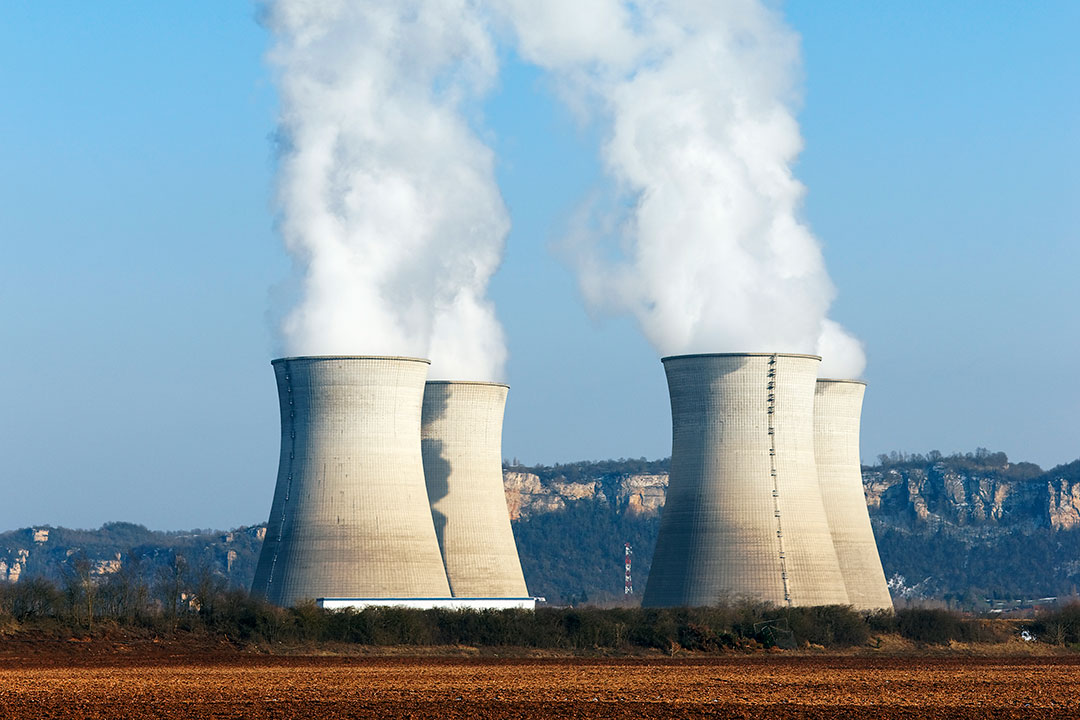
Static
By Marvin Tort

About two years ago, I read the Philippine Nuclear Research Institute’s opinion that the country’s power mix should include nuclear energy. The emphasis was on using small modular reactor (SMR) facilities, particularly for island provinces, to complement renewable energy.
I believe the nuclear path is inevitable for the Philippines. Population and economic growth, coupled with our increasing reliance on technology, will push demand for reliable, consistent baseload electricity: the kind renewables cannot always supply.
Even the government recognizes this reality. It has commissioned feasibility studies on nuclear options, while local power companies like Meralco and Aboitiz are reportedly actively seeking foreign partners or foreign technology for SMR projects that can be done here.
Just recently, Congress also passed the proposed Philippine National Nuclear Energy Safety Act, which creates the Philippine Atomic Energy Regulatory Authority (PhilATOM). This new body will serve as an independent regulator to ensure the country meets international standards on nuclear safety, radiation protection, and emergency preparedness.
I agree with the view that SMRs are the Philippines’ most viable nuclear option. Each unit is said to produce 70-300 megawatts of electricity. SMRs’ smaller size allows deployment in areas where large plants will not fit, and capacity can be scaled up simply by adding more modules or units.
These reactors can be constructed quickly, transported as factory-built modules, and installed with shorter lead times than conventional nuclear plants. They can operate either integrated into the main grid or as standalone off-grid units. Their standardized designs and modular construction reduce both complexity and construction risk.
SMRs also feature passive cooling systems that work without pumps or external power, which can reduce accident risks. Beyond electricity generation, they can provide industrial heat or desalination. For remote or mining communities, Micro Modular Reactors (MMRs) producing 5-15 megawatts are an attractive option.
The most important advantage over renewables is that nuclear energy produces 24/7 baseload power that is carbon-free, reliable, and sustainable. It can support energy-intensive industries, reduce reliance on coal and gas, and serve as a stable backup to solar, wind, and hydroelectric generation.
Already, the global technology sector offers a glimpse into the future. In 2023, Google signed an agreement with California-based Kairos Power for nuclear supply beginning in 2030, covering six or seven SMRs to power its data centers. Google expects a massive jump in energy consumption as its artificial intelligence-driven services expand.
Amazon and Microsoft are making similar moves. Amazon purchased a data center in Pennsylvania powered by nuclear energy, while Microsoft signed a supply deal with another nuclear facility in the same state. These companies are securing energy sources well before demand peaks, knowing that energy infrastructure takes years to build.
I believe this is a preview of what’s ahead for us. As technology becomes even more integrated into daily life, information technology (IT) operations — especially data centers, cloud services, and artificial intelligence (AI) — will require dedicated, uninterrupted power. Nuclear is poised to play a central role in ensuring energy security.
Heavy industries still consume far more electricity than the IT sector. In 2022, industry accounted for about 42% of global electricity use, driven by high-temperature, energy-intensive sectors like chemicals, mining, metals, and petrochemicals.
The IT sector, which includes data centers, AI, cloud computing, and cryptocurrency, accounted for roughly 2% of global electricity use. More broadly, the entire Information and Communication Technology (ICT) sector (including telecom networks and end-user devices) consumed about 9%.
Heavy industries dominate because their processes run continuously at a massive scale. Yet, their output also supports IT indirectly through infrastructure, manufacturing, and supply chains. Power-hungry industries produce steel, aluminum, copper wires, electronics, batteries, and other components used in ICT.
What’s changing is the growth rate of ICT demand for power. Some projections suggest data centers could consume 3-4% of global electricity by 2030, with more aggressive estimates placing it as high as 20%. AI alone could account for 20-50% of data center electricity use. This surge in energy demand explains why technology giants are investing in nuclear now, not later.
While nuclear offers a dependable, low-emission energy source, it carries inherent risks. Nuclear facilities rely on water sources for cooling, making them vulnerable to climate-related threats like droughts, floods, and hurricanes. Natural disasters such as earthquakes can also trigger accidents, as history has shown with Fukushima (2011). Then there is human error such as seen in Chernobyl (1986).
In the US, the 1979 Three Mile Island accident did not cause any immediate deaths, but it crippled public confidence in nuclear energy. The facility’s Unit 2 was decommissioned as a result. Unit 1 continued operations until 2019, when it was also shut down but for economic reasons.
In 2024, Constellation Energy decided to restart Unit 1 after signing a 20-year power purchase agreement with Microsoft. This reportedly marked the first time a US nuclear reactor resumed operations after closure, and at a site with a prior accident. It underscores that economic opportunity and energy security can sometimes outweigh lingering stigma.
Our current energy mix is still heavily dependent on coal (58%), and on natural gas (19%) and renewables (23%). SMRs can help cut coal and gas’ shares while boosting renewable integration. Nuclear’s steady output can strengthen baseload capacity, making the grid more resilient against variability in solar, wind, and hydro, especially with the unpredictability of the effects of climate change.
However, SMRs come with high upfront costs. To make their output affordable, the government will likely need to offer financing guarantees or structure public-private partnerships. Just as importantly, it must demonstrate that nuclear can be operated safely, with regulators who are technically competent and politically independent.
I admit to some reservations about running nuclear plants in the Philippines. Our governance, disaster preparedness, and regulatory frameworks must be airtight before the first SMR goes online. But delaying preparation is riskier. Energy demand will rise sharply over the next 25 years, and failing to secure future baseload capacity could leave the economy vulnerable to shortages, high prices, and dependence on imported fossil fuels.
Passing the nuclear energy law this year is only the start. The government must start building regulatory capacity through PhilATOM. Also, experts should already identify pilot or priority sites in Luzon, Visayas, and Mindanao based on demand centers, grid stability, and disaster risk profiles.
This later moves to the selection of technology partners, proven SMR developers with operational track records and robust safety designs. Project proponents must then conduct transparent consultations to build community trust and address concerns early. The government must target two to three SMR pilot projects to break ground before 2028.
Obviously, policymakers must weigh nuclear’s potential benefits against its risks with clear eyes. The need to consult experts and stakeholders. The decision to embrace nuclear power cannot be made on hype alone, and limited information. The initiative requires meticulous planning, strict oversight, and sustained public engagement.
If we get the balance right, SMRs could be the cornerstone of a cleaner, more reliable, and future-ready energy mix that can power not only our industries and households but also the digital infrastructure that will define the coming decades.
Marvin Tort is a former managing editor of BusinessWorld, and a former chairman of the Philippine Press Council